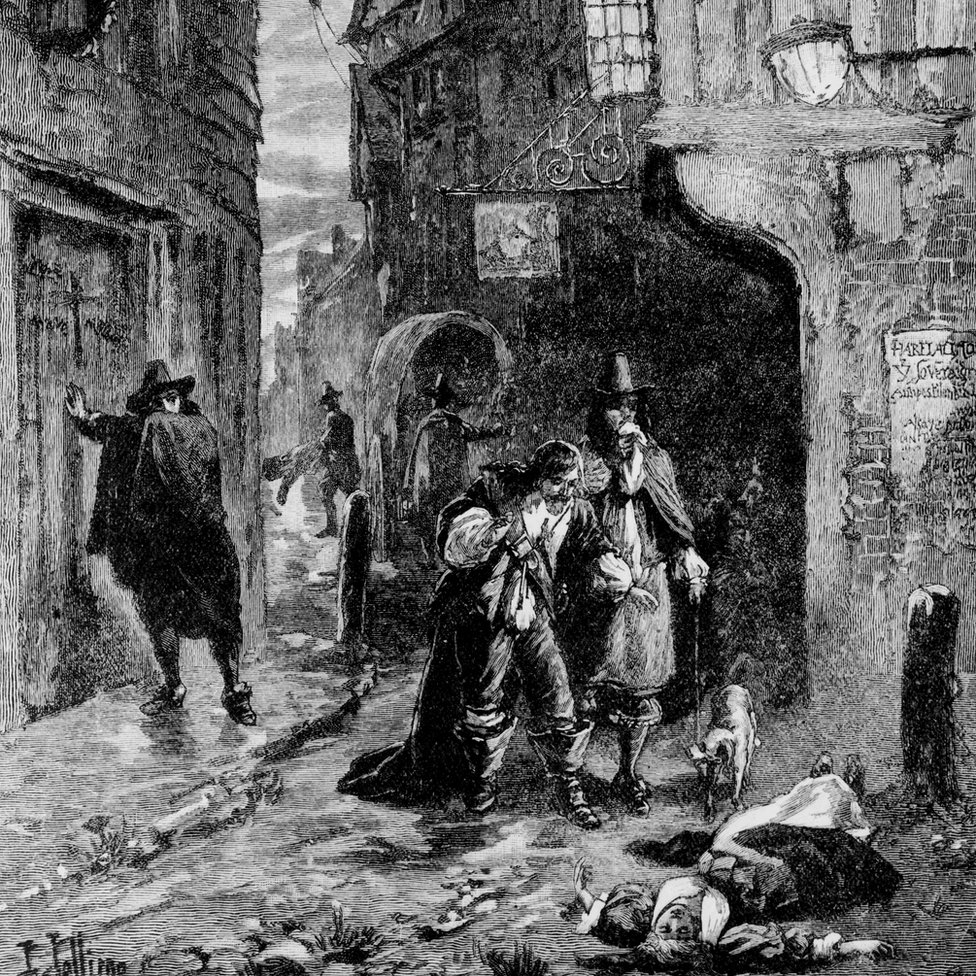
Introduction
The plague; according to the World Health Organization (WHO) as “an infectious disease caused by Yersinia pestis bacteria, usually found in small mammals and their fleas.” The WHO stated that the disease can be transmitted between animals and humans via fleas. Plagues can be found on all continents except Oceania. There are three different kinds of plagues; Bubonic plague, Septicemic plague, and Pneumonic plague. All three have similar symptoms; with patients developing a fever, chills, and headaches. Other symptoms may include weakness, abdominal pain, shock, bleeding into the skin and other organs, skin and other tissues may turn black and die, shortness of breath, chest pain, and coughs.
Historical Plagues
When the Black Death came to Europe in 1347, no one expected that this disease would kill millions of people and leave an entire continent in ruin. Evan Andrews says that “The populations of whole towns were wiped out, and it was said that the living spent most of their time burying the dead in mass graves.” Many medieval physicians tried to combat the disease in many ways, with little success due to them not understanding of the cause of the outbreak. Many people believed that it was a divine punishment for any sins that they committed. A Welsh poet named Jeuan Gethin wrote “We see death coming into our midst like black smoke” and “a plague which cuts off the young, a rootless phantom which has no mercy or fair countenance.” When the Black Death finally subsided around 1353, “it killed as many as 50 million people” which was more than half the population of Europe at the time. While the pandemic left much of the continent in disarray, many historians also believe that the labor shortages it caused were a boon to lower class workers, who saw increased economic and social mobility.
The Black Death’s last major outbreak in Great Britain took place in London from 1665-1666. This outbreak is also known by a different name; The Great Plague of London. It caused a mass exodus from London; mainly the upper class, which was led by King Charles II. “The plague started in April 1665 and spread rapidly through the hot summer months. Fleas from plague-infected rodents were one of the main causes of transmission” stated by Owen Jarus. By the time the plague ended the following year, about 100,000 people had died from the plague.

COVID-19
All through that COVID-19 is a recent pandemic, millions of people all across the world, with over 1 million people have died frim it. Though that many nations have taken precautions to prevent the spread the disease early on, the disease still managed to infected millions of people. One thing that immunologists like Matthew Woodruff are furiously trying to explain is “why some people get so sick while others recover unscathed. The pace is dizzying, but some clear trends have emerged. One area of focus has been the production of antibodies – powerful proteins capable of disabling and killing invading pathogens like viruses.” A great concern by many immunologists in this case has been the sporadic identification of so-called autoreactive antibodies. This means that instead of targeting disease causing microbes, they target the tissues of individuals suffering from severe cases of COVID-19.
Conclusion
In conclusion, plagues shouldn’t be taken lightly, as one infected person or animal can spread the disease to multiple people/animals within the area of the infected and could infect even more. People should be aware of their surroundings, the people they meet and themselves when it comes to their health and safety. Symptoms like fevers, headaches, shortness of breath, chest pains and choughs may not be seen as possible plague outbreak at first, but everyone should be causes of who they interact with afterwards. People also should look at past pandemics and see what they did, and to see if we can do the same thing.
Cited Sources
U.S. Department of Health & Human Services. “Plague.” Centers for Disease Control and Prevention, Centers for Disease Control and Prevention, 23 July 2020, www.cdc.gov/plague/index.html.
Andrews, Evan. “6 Devastating Plagues.” History.com, A&E Television Networks, 12 Oct. 2016, www.history.com/news/6-devastating-plagues.
Jarus, Owen. “20 Of the Worst Epidemics and Pandemics in History.” LiveScience, Purch, 20 Mar. 2020, www.livescience.com/worst-epidemics-and-pandemics-in-history.html.
World Health Organization. “Coronavirus.” World Health Organization, World Health Organization, www.who.int/health-topics/coronavirus.
Woodruff, Matthew. “COVID-19 Causes Some Patients’ Immune Systems to Attack Their Own Bodies.” JSTOR DAILY, 28 Oct. 2020, daily.jstor.org/covid-19-causes-some-patients-immune-systems-attack-their-own-bodies/.
